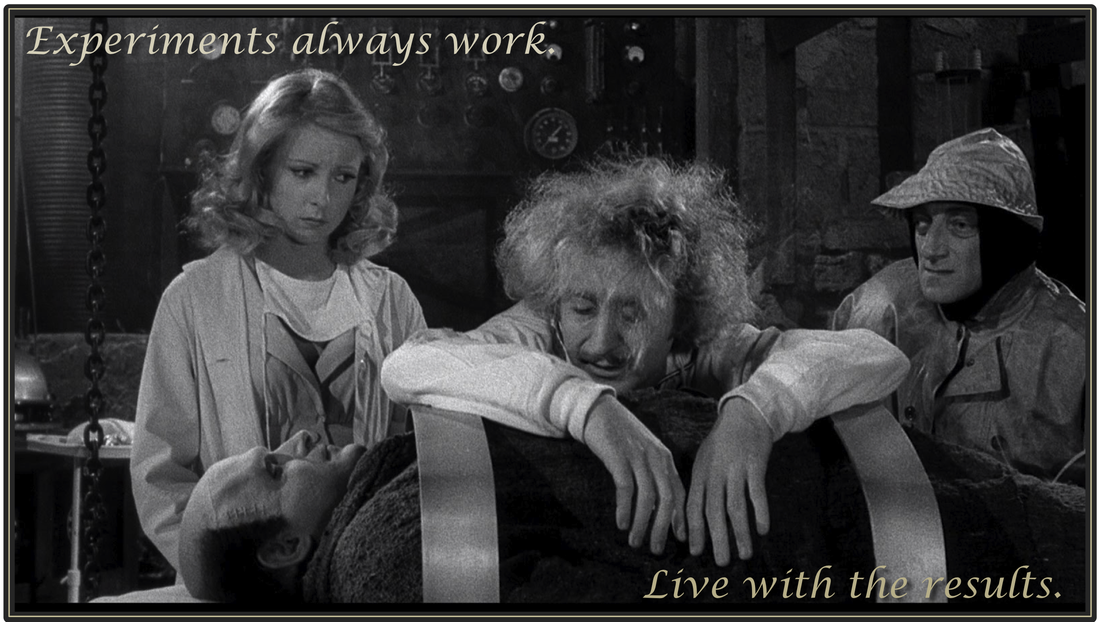|
Many engineering schools hold annual egg dropping contests. These are competitions where students have to design a contraption that will protect an egg from breaking when dropped from a certain height. Far from this being merely a fun pursuit, the different designs that are employed by the students allow them to get acquainted with the physics and strategies that have been employed to solve real problems ranging from saving human lives lives during car collisions to landing multimillion dollar probes safely on distant planets. In the video below, Mark Rober explains the physics behind protecting an egg during a drop from a bridge and walks us through several designs that have been successfully employed.
0 Comments
When hydrogen peroxide is combined with soap and a catalyst is added, the hydrogen peroxide decomposes producing heat and releasing oxygen which, due to the soap, generates a large amount of foam (called “elephant toothpaste” by some people). While the generation of a modest amount of elephant toothpaste is often a crowd pleaser at science shows and has even been featured in sitcoms and movies, there are a few rival groups of nerds that are engaged in a cutthroat competition to produce the largest amount of elephant toothpaste ever. The video below chronicles some of the history and the last epic attempt by Nick Uhas and his gang. The end result reminds me a bit of the classic monster movie, The Blob. except that fragments of the stuff even went airborne! I have posted in this blog about how the chemical and physical characteristics of an element can be dramatically altered by other elements with which it combines. A case in point is sodium chloride (table salt), which is an innocuous chemical. However, as the video from the BackyardScientist below demonstrates, molten sodium chloride can be quite explosive when added to water. However, this reaction seems to be a physical reaction not related to the explosive properties of elemental sodium. It may have to do with the way the water is heated and converted to vapor very fast within the blob of the molten salt as it goes under the surface of the water. One of my Twitter followers named Ken has a You Tube Channel called Kid’s Fun Science where he posts the science experiments that he conducts during Science Night at his local Elementary School. In the video below he shows the blowing up of a watermelon employing rubber bands using the potential energy accumulated in rubber bands after stretching them around the melon. There are several forms of potential energy. The potential energy stored in an stretched rubber band is called elastic potential energy. This type of potential energy can be stored in elastic materials as a result of stretching or compressing and can be converted very rapidly into kinetic energy (energy of movement) when the force opposing the compression or stretching (in this case the structural integrity of the watermelon) is eliminated. Check out at the end of the video the final fate of the rubber bands after the release of their pent-up energy! I encourage you to check other fun science experiments in the Kid's Fun Science You Tube Channel and to follow them on Twitter, Facebook, Instagram, and Pinterest. Have you ever wondered what would happen if you shoot a ball from a truck travelling in the opposite direction in such a way that the speed of the truck matches the speed of the ball? That is what the Mythbuster folks did in this video. Back in the 16th century it was still believed that light objects would fall slower than heavy objects. The Italian scientists Galileo Galilei allegedly proved this theory to be wrong in a famous experiment where he dropped two balls of equal size but different masses from the leaning tower of Pisa. There is some controversy as to whether Galileo actually performed the experiment, but this experiment has been repeated in modern times in many ways. Two of such notable repetitions are shown below. The first is that carried out by astronaut Dave Scott of the Apollo 15 mission on the moon. The second was conducted at NASA's massive Space Simulation Chamber in Ohio. Many matches contain a form of iron oxide that is not attracted to magnets, but as a result of the burning reaction taking place in the head of the match, the iron oxide is converted to metallic iron which is attracted to magnets. This is a cool demonstration that the chemical form of an element can dramatically change its properties. This is a great demonstration of the effects of atmospheric pressure (what keeps the water inside the jar when the card is covering it) and surface tension (what keeps the water inside the jar when the card is removed). We can always learn something from the results of our experiments even if they don't turn out the way we expected.
|
Details
Categories
All
Archives
June 2024
|

 RSS Feed
RSS Feed